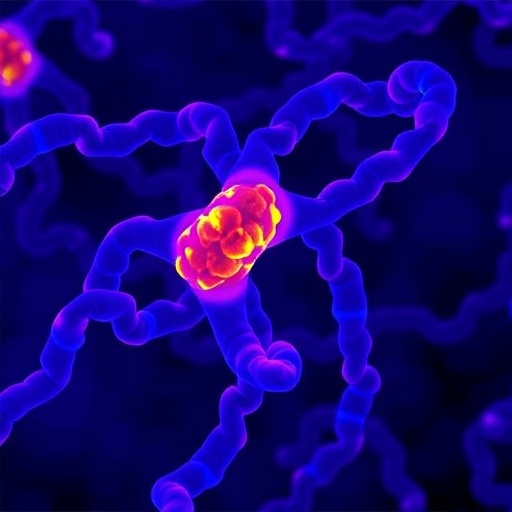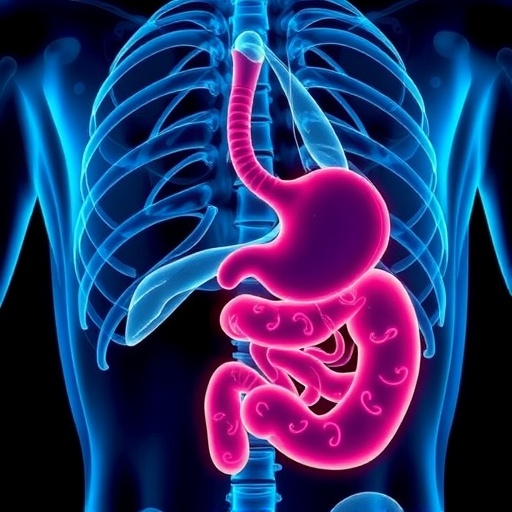
In a groundbreaking study that promises to redefine our understanding of the immune system’s spatial organization during inflammation, researchers have unveiled a critical role for lactate signaling in orchestrating the aggregation of immune-inflammatory hotspots. This spatial congregation of immune cells, once considered a passive consequence of inflammation, is now revealed to be an actively regulated process pivotal for both the progression and the resolution of inflammatory responses. The new work identifies the solute carrier protein SLC5A12 as a key mediator in this phenomenon, and intriguingly demonstrates that its blockade can promote the dismantling of these hotspots, offering potential therapeutic avenues for chronic inflammatory diseases.
The complexity of immune responses is partly rooted in the temporal and spatial dynamics of immune cell activity. Inflammation, inherently a protective mechanism, often manifests in localized accumulations of immune cells, referred to as hotspots, which serve as focal points for pro-inflammatory signaling and tissue remodeling. Until recently, the drivers behind the assembly and persistence of such clusters remained elusive. The current study elucidates that lactate, a metabolic byproduct traditionally viewed merely as a waste product or fuel, acts as a signaling molecule that instigates the formation of these microenvironments, intricately linking immunometabolism with tissue-level inflammation patterns.
Lactate’s role as a signaling metabolite has been increasingly recognized in various biological contexts, including cancer biology and immune cell function. What this new research highlights is the lactate-induced activation of pathways that cause immune cells, notably T cells and macrophages, to migrate and consolidate into inflammatory hotspots. Through sophisticated imaging techniques and molecular analyses, the authors document how elevated extracellular lactate concentrations in inflamed tissues function as a chemoattractant and modulator, fostering cellular clusters that potentiate local immune activation and tissue damage in chronic inflammatory settings.
.adsslot_o5TWwZBi12{width:728px !important;height:90px !important;}
@media(max-width:1199px){ .adsslot_o5TWwZBi12{width:468px !important;height:60px !important;}
}
@media(max-width:767px){ .adsslot_o5TWwZBi12{width:320px !important;height:50px !important;}
}
ADVERTISEMENT
Central to this process is the transporter protein SLC5A12, which facilitates lactate uptake into immune cells. By modulating intracellular lactate levels, SLC5A12 influences the behavior and positioning of immune cells during inflammatory responses. Pharmacological or genetic inhibition of SLC5A12 was shown to markedly disrupt the formation of immune-inflammatory hotspots. This highlights not only the feasibility of targeting metabolic pathways to influence immune cell dynamics but also the potential to achieve spatial reprogramming of inflammation, which could transform therapeutic strategies for diseases characterized by persistent inflammation, such as rheumatoid arthritis and inflammatory bowel disease.
The team employed a multi-disciplinary approach, combining in vivo models of inflammation, high-resolution imaging, and transcriptomic profiling to map the relationships between metabolic shifts and immune cell aggregation. The findings reveal a nuanced picture: lactate accumulation triggers intracellular signaling cascades that alter the expression of adhesion molecules and chemokine receptors, thereby enhancing cell-cell interactions and directional migration toward areas of high lactate concentration. This creates a positive feedback loop where localized lactate production attracts further immune cells, reinforcing the inflammatory niche.
Furthermore, the study delves into the metabolic crosstalk between different immune cell populations within these hotspots. Macrophages metabolizing glucose via glycolysis produce lactate, which in turn influences neighboring T cells by altering their metabolic state and function. This intercellular metabolic interplay underscores the emerging paradigm that immune function is not simply dictated by antigen recognition and cytokines but is deeply intertwined with metabolic cues emanating from the tissue microenvironment.
Intriguingly, the blockade of SLC5A12 not only prevented hotspot formation but also accelerated their resolution, facilitating the return of tissue homeostasis. This is of enormous clinical relevance, as chronic inflammation is typified by recalcitrant immune cell clusters that perpetuate tissue damage and fibrosis. Modulating lactate transport through SLC5A12 opens the door to therapies that can dissolve pathogenic immune aggregates without broadly suppressing immune competence, potentially reducing the side effects associated with current immunosuppressive drugs.
Another exciting aspect of the investigation lies in the potential diagnostic applications. The localization and density of lactate-dependent immune clusters could serve as biomarkers for inflammatory disease activity or therapeutic response monitoring. Non-invasive imaging techniques combined with lactate-sensitive probes might enable clinicians to identify and track such hotspots, tailoring treatments to individual patient’s spatial immune landscapes.
The implications of lactate-mediated immune aggregation extend beyond chronic inflammatory diseases. Emerging evidence points to similar mechanisms operating in tumor microenvironments, where lactate-rich niches foster immune cell exclusion or dysfunction, contributing to immune evasion. Thus, the insights gained from this study may influence cancer immunotherapy approaches by targeting metabolic pathways to remodel the immune architecture within tumors.
Furthermore, the study stimulates discussion on the broader concept of ‘immunometabolic geography’ – the idea that metabolic signals govern not only cellular activation states but also their precise positioning within tissues. This spatial dimension of immune regulation adds a new layer of complexity, suggesting that manipulating metabolites like lactate could spatially reprogram the immune system, enhancing protective responses while curbing pathological inflammation.
The meticulous dissection of the lactate-SLC5A12 axis also sheds light on how metabolic checkpoints integrate with classical immune signaling pathways. The convergence of metabolite sensing and chemokine-guided migration reflects the sophisticated network through which immune cells coordinate their actions in a dynamic environment. Understanding this interplay could lead to the design of next-generation therapies that fine-tune immune responses with spatial and metabolic precision.
It is worth noting that the research also identifies potential pitfalls and challenges for clinical translation. Given the widespread expression of SLC5A12 and varied roles of lactate in normal physiology, systemic inhibition could pose risks. The development of targeted delivery systems or transient modulation strategies will be crucial to harness the therapeutic benefits while minimizing off-target effects.
Moreover, the findings encourage a revisitation of lactate’s biological reputation. Far from being a mere metabolic byproduct, lactate emerges as a pivotal signaling hub that orchestrates multicellular immune behaviors. This recontextualization aligns with the expanding field of metabolite-mediated intercellular communication, which holds vast unexplored potential in immunology and beyond.
Overall, this study marks a pivotal advance bridging metabolism, immunology, and tissue biology. By elucidating how lactate signaling drives the spatial organization of immune responses and demonstrating that SLC5A12 blockade can dissolve pathogenic inflammatory clusters, it opens a new frontier in the control of chronic inflammatory diseases. The evidence presented invites further exploration into metabolite-driven spatial immunology and lays the groundwork for innovative, metabolism-based therapeutic strategies that could revolutionize patient care in inflammatory and immune-mediated disorders.
As the search for effective treatments against chronic inflammatory diseases continues, the discovery of lactate-driven immune aggregation and the promise of targeting SLC5A12 illuminates a new path forward. Future studies will undoubtedly explore the fine balance of immune cell energetics and spatial communication, heralding an era where manipulation of metabolic signals changes the way we combat disease, ensuring more precise, localized, and effective interventions.
Subject of Research:
Lactate signaling’s role in the spatial organization of immune-inflammatory hotspots and the therapeutic potential of blocking the lactate transporter SLC5A12 for resolution of inflammation.
Article Title:
Lactate signalling leads to aggregation of immune-inflammatory hotspots and SLC5A12 blockade promotes their resolution.
Article References:
Certo, M., Pontarini, E., Gilbert, S.G. et al. Lactate signalling leads to aggregation of immune-inflammatory hotspots and SLC5A12 blockade promotes their resolution. Nat Metab (2025). https://doi.org/10.1038/s42255-025-01331-9
Image Credits:
AI Generated
Tags: chronic inflammatory disease therapiesdismantling inflammatory hotspotsimmune cell aggregation during inflammationimmune-inflammatory hotspotsimmunometabolism and inflammationlactate signaling in immune responsemetabolic byproducts in immune signalingregulation of inflammatory responsesrole of lactate in immune dynamicsSLC5A12 inhibition for inflammationspatial organization of immune cellstherapeutic targeting of immune hotspots






